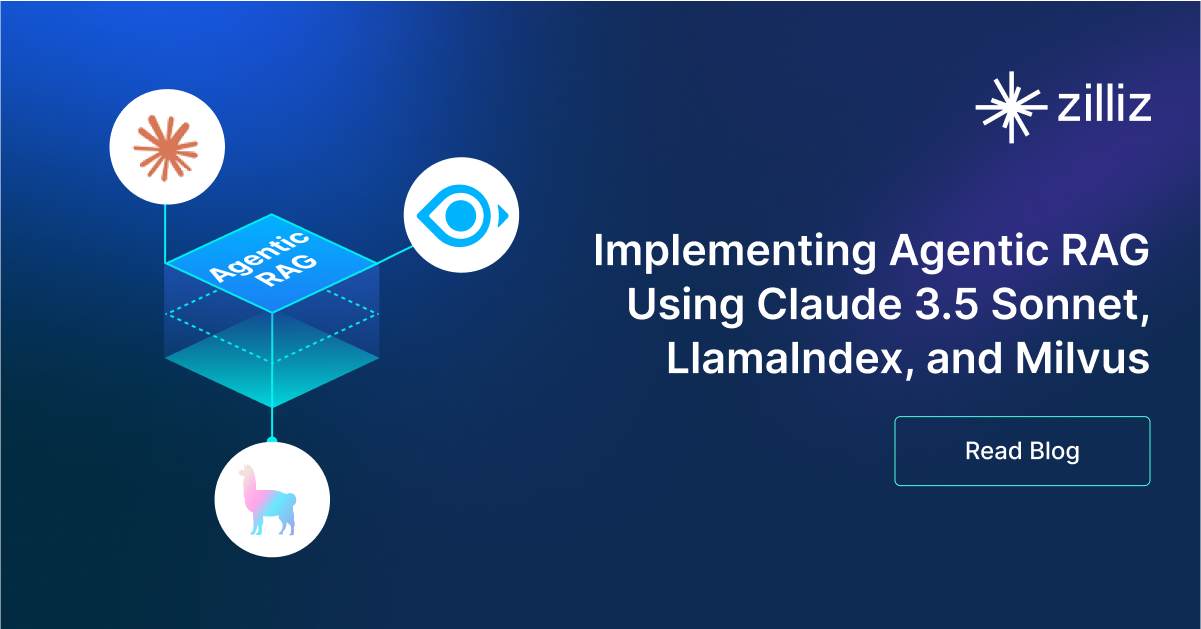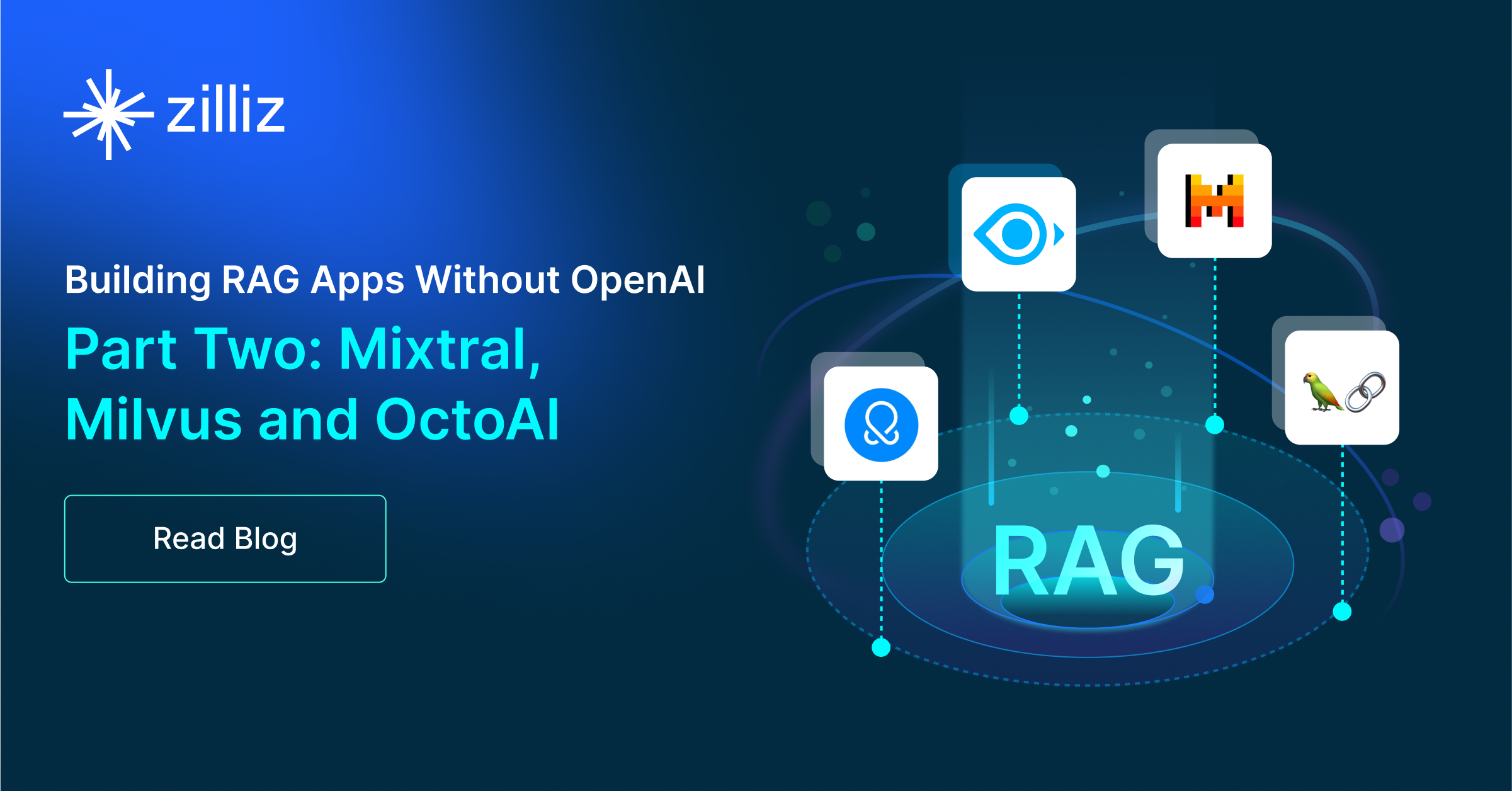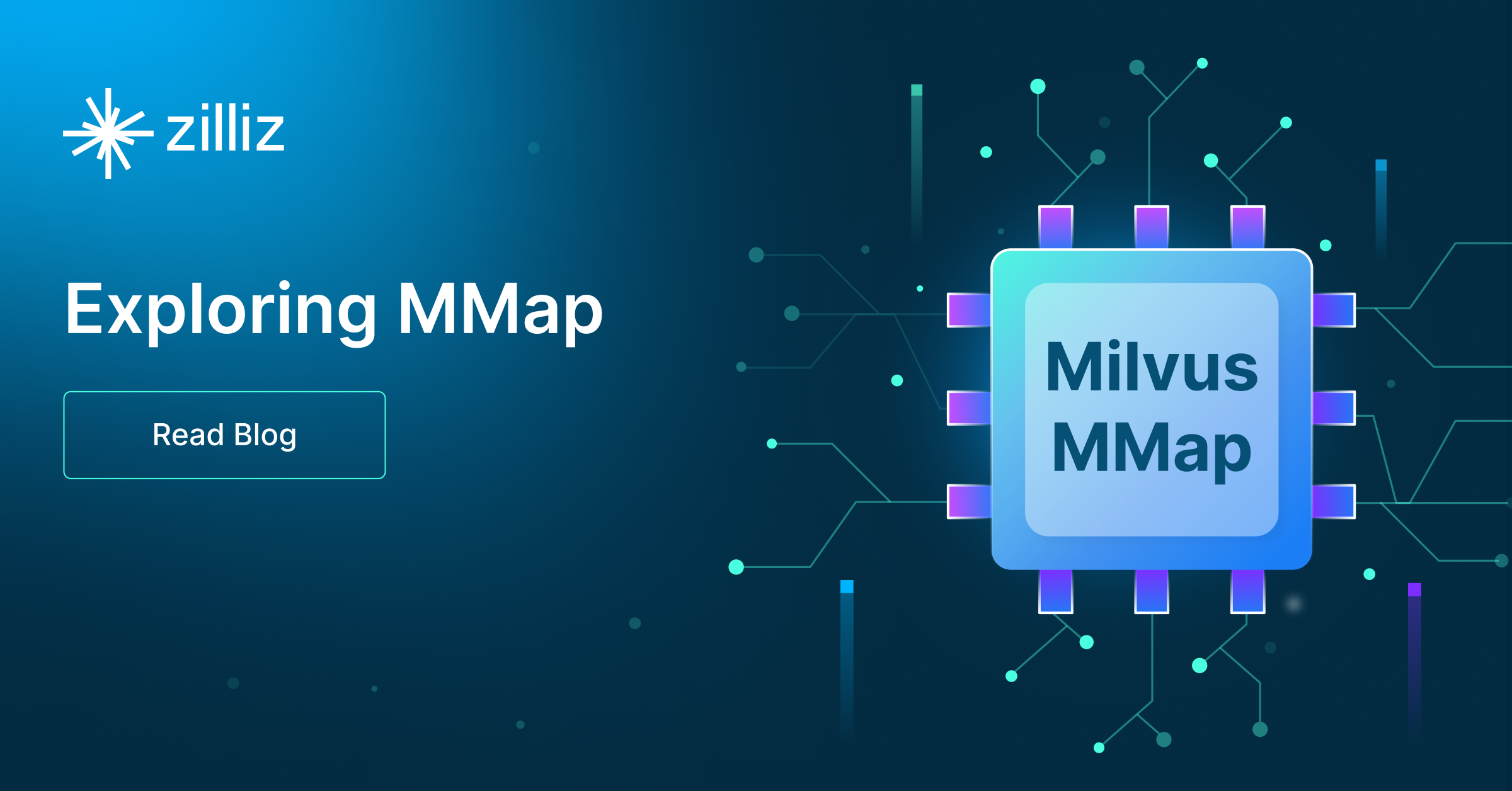Build RAG Chatbot with Llamaindex, Faiss, OpenAI GPT-4o, and Ollama bge-m3
Introduction to RAG
Retrieval-Augmented Generation (RAG) is a game-changer for GenAI applications, especially in conversational AI. It combines the power of pre-trained large language models (LLMs) like OpenAI’s GPT with external knowledge sources stored in vector databases such as Milvus and Zilliz Cloud, allowing for more accurate, contextually relevant, and up-to-date response generation. A RAG pipeline usually consists of four basic components: a vector database, an embedding model, an LLM, and a framework.
Key Components We'll Use for This RAG Chatbot
This tutorial shows you how to build a simple RAG chatbot in Python using the following components:
- Llamaindex: a data framework that connects large language models (LLMs) with various data sources, enabling efficient retrieval-augmented generation (RAG). It helps structure, index, and query private or external data, optimizing LLM applications for search, chatbots, and analytics.
- Faiss: also known as Facebook AI Similarity Search, is an open-source vector search library that allows developers to quickly search for semantically similar multimedia data within a massive dataset of unstructured data. (If you want a much more scalable solution or hate to manage your own infrastructure, we recommend using Zilliz Cloud, which is a fully managed vector database service built on the open-source Milvus and offers a free tier supporting up to 1 million vectors.)
- OpenAI GPT-4o: A multimodal AI model optimized for advanced natural language processing, image understanding, and audio analysis. It excels in real-time interactions, offering high accuracy, contextual awareness, and seamless integration across diverse inputs. Ideal for dynamic applications like interactive customer support, content generation, multilingual translation, and complex data synthesis in industries requiring rapid, adaptive AI solutions.
- Ollama BGE-M3: A multilingual embedding model optimized for semantic understanding, retrieval, and clustering. Strengths include high accuracy across 100+ languages, robust performance in dense retrieval tasks, and scalability. Ideal for enterprise search systems, cross-lingual applications, and AI-driven knowledge management requiring precise semantic analysis.
By the end of this tutorial, you’ll have a functional chatbot capable of answering questions based on a custom knowledge base.
Note: Since we may use proprietary models in our tutorials, make sure you have the required API key beforehand.
Step 1: Install and Set Up Llamaindex
pip install llama-index
Step 2: Install and Set Up OpenAI GPT-4o
%pip install llama-index llama-index-llms-openai
from llama_index.llms.openai import OpenAI
llm = OpenAI(
model="gpt-4o",
# api_key="some key", # uses OPENAI_API_KEY env var by default
)
Step 3: Install and Set Up Ollama bge-m3
%pip install llama-index-embeddings-ollama
from llama_index.embeddings.ollama import OllamaEmbedding
embed_model = OllamaEmbedding(
model_name="bge-m3",
)
Step 4: Install and Set Up Faiss
%pip install llama-index-vector-stores-faiss
from llama_index.core import (
SimpleDirectoryReader,
load_index_from_storage,
VectorStoreIndex,
StorageContext,
)
from llama_index.vector_stores.faiss import FaissVectorStore
vector_store = FaissVectorStore(faiss_index=faiss_index)
Step 5: Build a RAG Chatbot
Now that you’ve set up all components, let’s start to build a simple chatbot. We’ll use the Milvus introduction doc as a private knowledge base. You can replace it with your own dataset to customize your RAG chatbot.
import requests
from llama_index.core import SimpleDirectoryReader
# load documents
url = 'https://raw.githubusercontent.com/milvus-io/milvus-docs/refs/heads/v2.5.x/site/en/about/overview.md'
example_file = 'example_file.md' # You can replace it with your own file paths.
response = requests.get(url)
with open(example_file, 'wb') as f:
f.write(response.content)
documents = SimpleDirectoryReader(
input_files=[example_file]
).load_data()
print("Document ID:", documents[0].doc_id)
storage_context = StorageContext.from_defaults(vector_store=vector_store)
index = VectorStoreIndex.from_documents(
documents, storage_context=storage_context, embed_model=embed_model
)
query_engine = index.as_query_engine(llm=llm)
res = query_engine.query("What is Milvus?") # You can replace it with your own question.
print(res)
Example output
Milvus is a high-performance, highly scalable vector database designed to operate efficiently across various environments, from personal laptops to large-scale distributed systems. It is available as both open-source software and a cloud service. Milvus excels in managing unstructured data by converting it into numerical vectors through embeddings, which facilitates fast and scalable searches and analytics. The database supports a wide range of data types and offers robust data modeling capabilities, allowing users to organize their data effectively. Additionally, Milvus provides multiple deployment options, including a lightweight version for quick prototyping and a distributed version for handling massive data scales.
Optimization Tips
As you build your RAG system, optimization is key to ensuring peak performance and efficiency. While setting up the components is an essential first step, fine-tuning each one will help you create a solution that works even better and scales seamlessly. In this section, we’ll share some practical tips for optimizing all these components, giving you the edge to build smarter, faster, and more responsive RAG applications.
LlamaIndex optimization tips
To optimize LlamaIndex for a Retrieval-Augmented Generation (RAG) setup, structure your data efficiently using hierarchical indices like tree-based or keyword-table indices for faster retrieval. Use embeddings that align with your use case to improve search relevance. Fine-tune chunk sizes to balance context length and retrieval precision. Enable caching for frequently accessed queries to enhance performance. Optimize metadata filtering to reduce unnecessary search space and improve speed. If using vector databases, ensure indexing strategies align with your query patterns. Implement async processing to handle large-scale document ingestion efficiently. Regularly monitor query performance and adjust indexing parameters as needed for optimal results.
Faiss Optimization Tips
To enhance the performance of the Faiss library in a Retrieval-Augmented Generation (RAG) system, begin by selecting the appropriate index type based on your data volume and query speed requirements; for example, using an IVF (Inverted File) index can significantly speed up queries on large datasets by reducing the search space. Optimize your indexing process by using the nlist parameter to partition data into smaller clusters and set an appropriate number of probes (nprobe) during retrieval to balance between speed and accuracy. Ensure the vectors are properly normalized and consider using 16-bit or 8-bit quantization during indexing to reduce memory footprints for large datasets while maintaining reasonable retrieval accuracy. Additionally, consider leveraging GPU acceleration if available, as Faiss highly benefits from parallel processing, leading to faster nearest neighbor searches. Continuous fine-tuning and benchmarking with varying parameters and configurations can guide you in finding the most efficient setup specific to your data characteristics and retrieval requirements.
OpenAI GPT-4o optimization tips
To optimize OpenAI GPT-4o in a RAG setup, structure inputs with concise, context-rich prompts and preprocess retrieved documents to remove noise. Use metadata filtering to prioritize relevant sources and limit context length to avoid token waste. Fine-tune retrieval models to align with GPT-4o’s strengths, employ chunking with overlap for continuity, and experiment with temperature and max_token settings for balanced creativity and focus. Cache frequent queries and implement rate limiting to manage costs. Regularly evaluate outputs to refine retrieval and generation alignment.
Ollama bge-m3 optimization tips
To optimize Ollama bge-m3 in a RAG setup, ensure input text is preprocessed (lowercasing, removing noise) and split into semantically coherent chunks (300-500 tokens) to balance retrieval accuracy and computational load. Use dynamic pooling to prioritize key phrases in embeddings. Fine-tune the model on domain-specific data with contrastive learning to enhance relevance. Adjust temperature and top-k sampling for controlled generation. Leverage batch inference for parallel processing and enable hardware acceleration (e.g., CUDA) for faster embeddings. Regularly validate retrieval performance with benchmark datasets to refine thresholds and ranking strategies.
By implementing these tips across your components, you'll be able to enhance the performance and functionality of your RAG system, ensuring it’s optimized for both speed and accuracy. Keep testing, iterating, and refining your setup to stay ahead in the ever-evolving world of AI development.
RAG Cost Calculator: A Free Tool to Calculate Your Cost in Seconds
Estimating the cost of a Retrieval-Augmented Generation (RAG) pipeline involves analyzing expenses across vector storage, compute resources, and API usage. Key cost drivers include vector database queries, embedding generation, and LLM inference.
RAG Cost Calculator is a free tool that quickly estimates the cost of building a RAG pipeline, including chunking, embedding, vector storage/search, and LLM generation. It also helps you identify cost-saving opportunities and achieve up to 10x cost reduction on vector databases with the serverless option.
 Calculate your RAG cost
Calculate your RAG cost
What Have You Learned?
Congratulations on making it through this tutorial! You've just unlocked the door to building a cutting-edge Retrieval-Augmented Generation (RAG) system! With LlamaIndex as your agile framework, you can seamlessly manage your data and queries, while Faiss serves as your lightning-fast vector database to efficiently retrieve similar documents using embeddings. You've learned how to harness the power of OpenAI’s GPT-4o as your LLM, enabling you to generate rich and contextually relevant responses, all while integrating the bge-m3 embedding model that translates your data into a format ideal for searching and processing. Each component plays a vital role in a well-oiled RAG pipeline, and now you possess the knowledge to leverage these technologies to enhance your applications.
As we explored optimization tips along the way, you learned how to fine-tune parameters to improve retrieval accuracy and response quality. Plus, you now have access to a free RAG cost calculator, giving you the tools to estimate and manage your project's budget effectively. The possibilities ahead are vast, and I can’t wait for you to dive in and start innovating! So go ahead—build your own RAG applications, experiment with different datasets and parameters, and continuously refine your system. Your journey into the world of AI-powered information retrieval is just beginning, and who knows what breakthroughs you’ll achieve next? Keep pushing the boundaries, and let your creativity shine!
Further Resources
🌟 In addition to this RAG tutorial, unleash your full potential with these incredible resources to level up your RAG skills.
- How to Build a Multimodal RAG | Documentation
- How to Enhance the Performance of Your RAG Pipeline
- Graph RAG with Milvus | Documentation
- How to Evaluate RAG Applications - Zilliz Learn
- Generative AI Resource Hub | Zilliz
We'd Love to Hear What You Think!
We’d love to hear your thoughts! 🌟 Leave your questions or comments below or join our vibrant Milvus Discord community to share your experiences, ask questions, or connect with thousands of AI enthusiasts. Your journey matters to us!
If you like this tutorial, show your support by giving our Milvus GitHub repo a star ⭐—it means the world to us and inspires us to keep creating! 💖
- Introduction to RAG
- Key Components We'll Use for This RAG Chatbot
- Step 1: Install and Set Up Llamaindex
- Step 2: Install and Set Up OpenAI GPT-4o
- Step 3: Install and Set Up Ollama bge-m3
- Step 4: Install and Set Up Faiss
- Step 5: Build a RAG Chatbot
- Optimization Tips
- RAG Cost Calculator: A Free Tool to Calculate Your Cost in Seconds
- What Have You Learned?
- Further Resources
- We'd Love to Hear What You Think!
Content
Vector Database at Scale
Zilliz Cloud is a fully-managed vector database built for scale, perfect for your RAG apps.
Try Zilliz Cloud for Free


